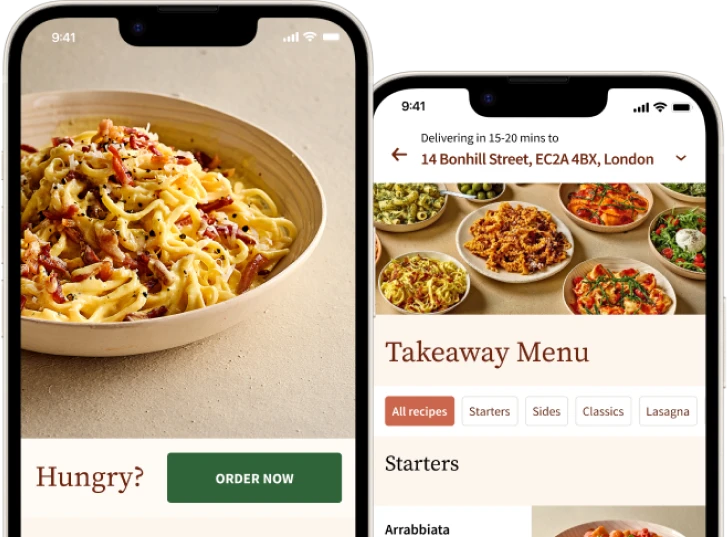
We make the UK's freshest, artisan pasta
Order nowOrder a takeaway
Our chefs prepare fresh pasta to order & we'll deliver in as little as 15 minutes.

Tell your friends to order a takeaway & be rewarded!
Get £10 off for you and a friend when you refer them to Pasta Evangelists for the first time

Order a recipe kit
Prepare fresh, restaurant-quality pasta at home in as little as 5 minutes. Delivered nationwide.
Visit our Pasta Academy
Our pasta-making classes are led by expert Italian chefs & include unlimited Prosecco.
Why you’ll love our pasta
Restaurant-quality
Our dishes are prepared by expert chefs under Executive Chef Giancarlo Perbellini.
Convenient
Tried & Trusted
We've served over 1m customers in the UK and received accolades from leading press

“This is pasta
elevated”
- TATLER
Visit us in our Harrods Pasta Bar
You can visit our restaurant in the iconic Harrods department store, where we create many of our best-selling dishes available to order online.


Join the family
Sign up for a delicious surprise in your inbox




















